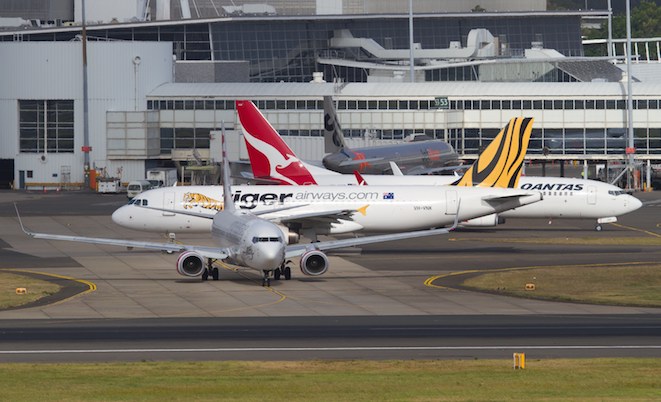
Australia’s domestic carriers flew emptier aircraft in June as economic conditions and recent capacity increases continue to affect demand for air travel, although analysts say the clouds may slowly be lifting.
Load factors on domestic flights fell more than two percentage points in June, to 73.2 per cent from 75.4 per cent in the prior corresponding period, figures from the Bureau of Infrastructure, Transport and Regional Economics published on Thursday showed.
The industry measure of how full aircraft are has fallen or stayed the same on a year-on-year basis for nine of the past 10 months.
“Load factors on individual routes decreased on 35 of the 61 RPT (regular public transport) routes for which data is available in both years,” the report said.
The only month since September 2013 where load factors have increased was in January 2014, when they rose to 75.1 per cent, from 74.4 per cent in the prior corresponding period.
Australia’s two major carriers were tipped to post a full year loss for 2013/14, with Qantas forecast to announce a loss in excess of $800 million, while Virgin was expected to post a loss approaching $200 million.
The increase in capacity from all carriers over the past year, coupled with some wobbles in the local economy and a negative reaction to the federal budget have all been cited as factors that have contributed to a dampening in demand for air travel.
There were 57.72 million passengers carried on RPT services in the 12 months to June 30 2014, an increase of one per cent from 57.12 million in the prior corresponding period, the BITRE report said.
Capacity, as measured by available seat kilometres, rose 2.3 per cent in 2013/14. As a result, load factors fell 0.7 percentage points to 76.7 per cent.
CIMB analyst Mark Williams said he expected the domestic aviation market to slowly improve over the rest of calendar 2014 and into 2015.
“Forward looking airline schedule data suggests capacity will decline 1-2 per cent across the top 10 domestic routes during 2Q15,” Williams said in a research note dated August 5.
“This should have a positive effect on underlying yields in the market.”










